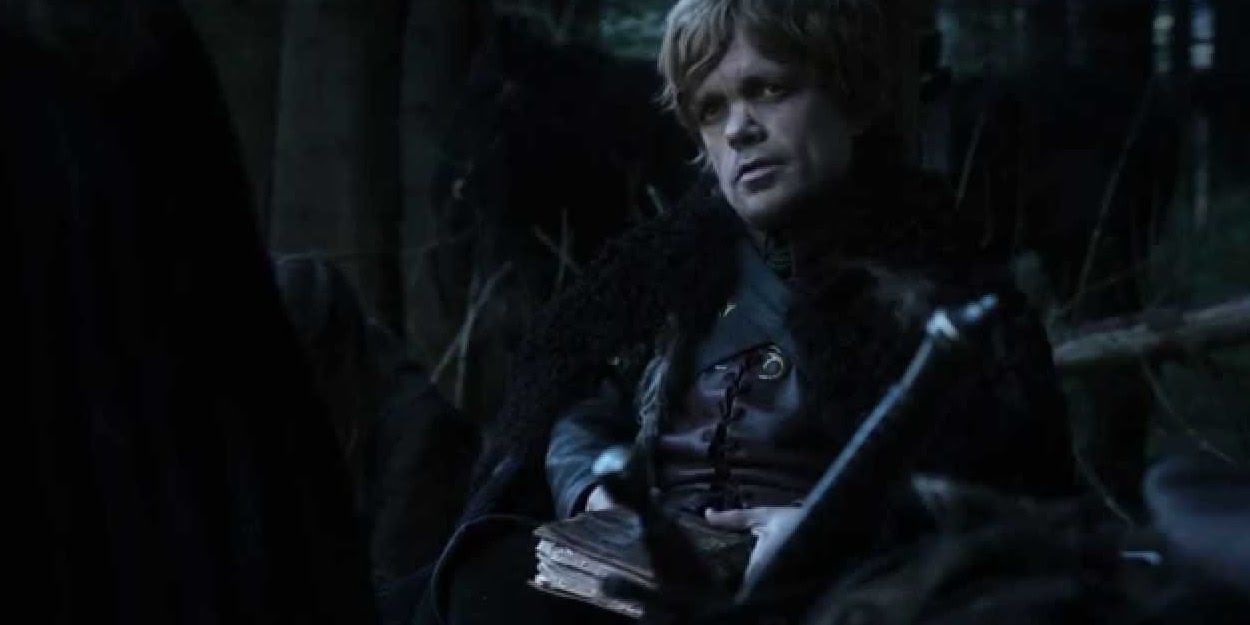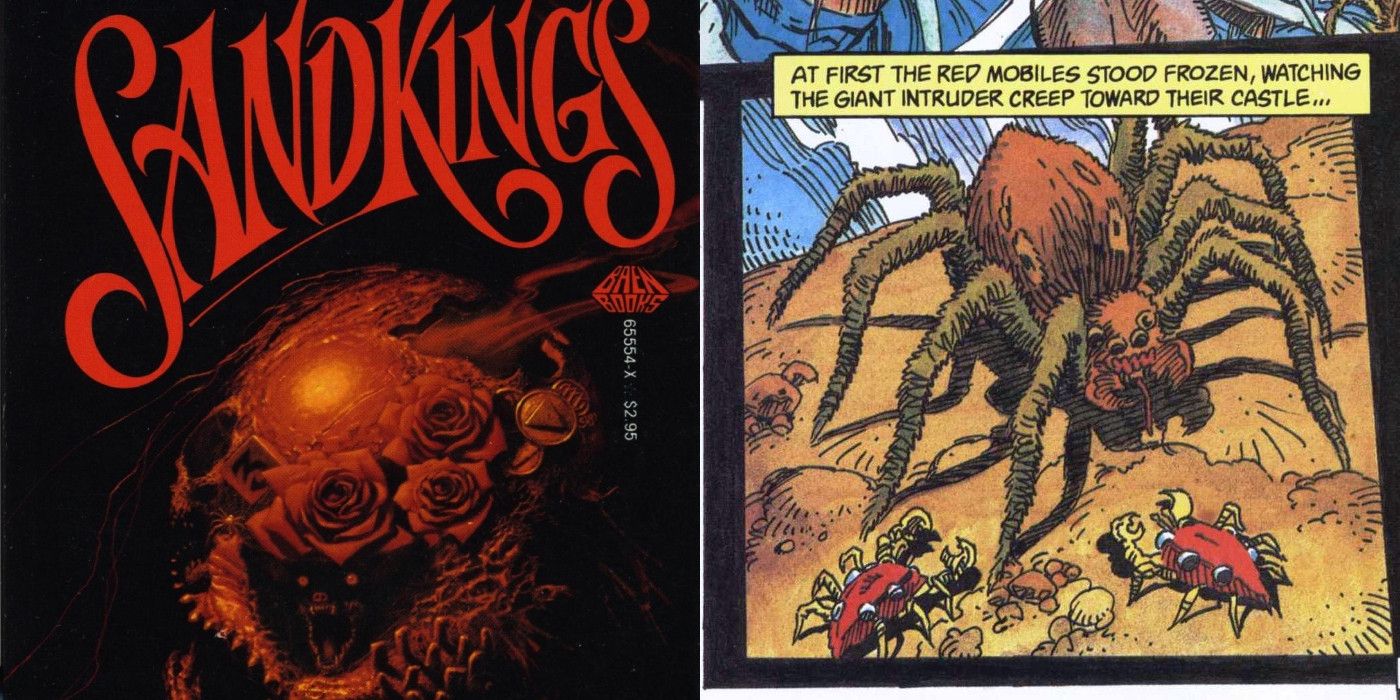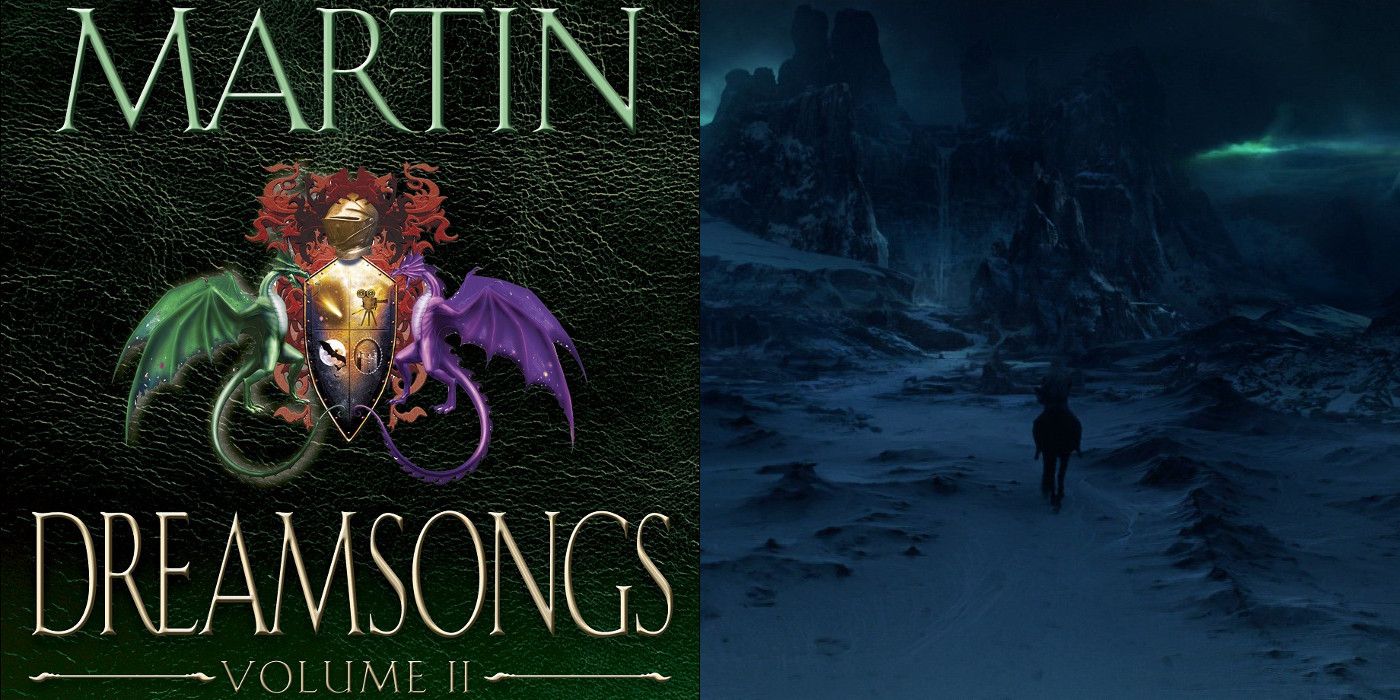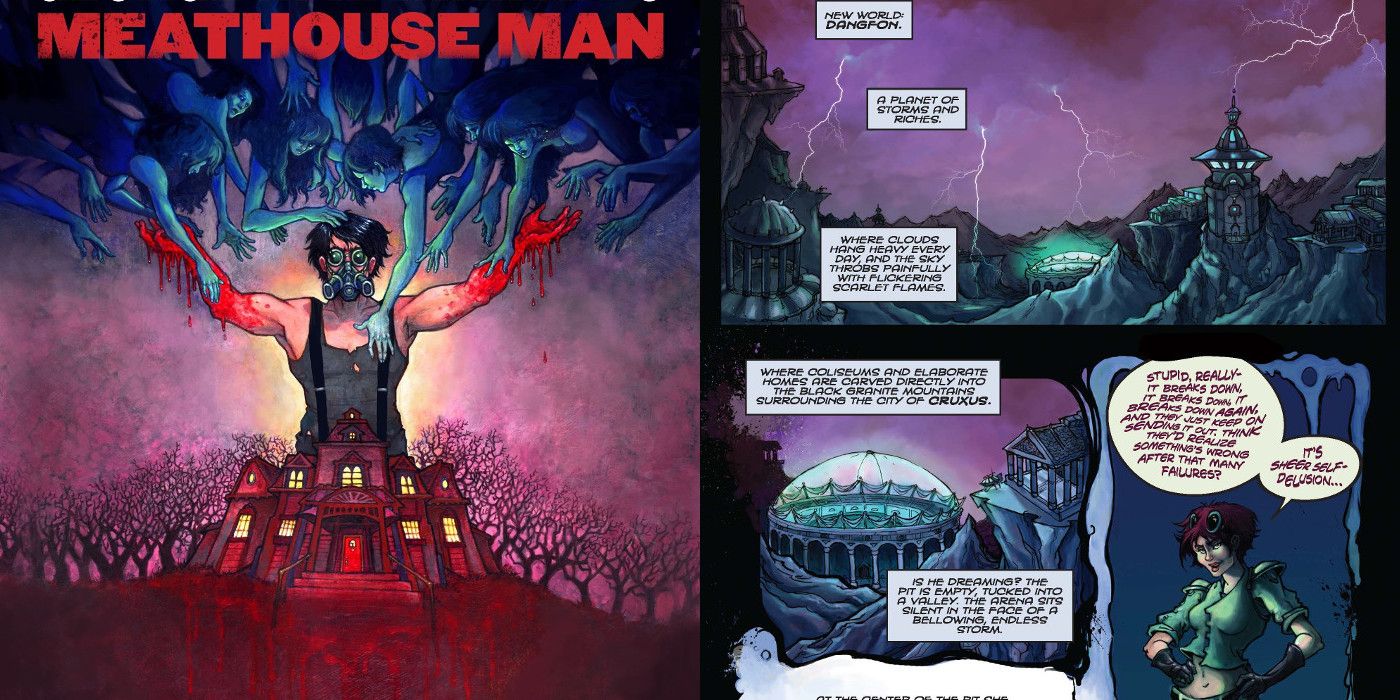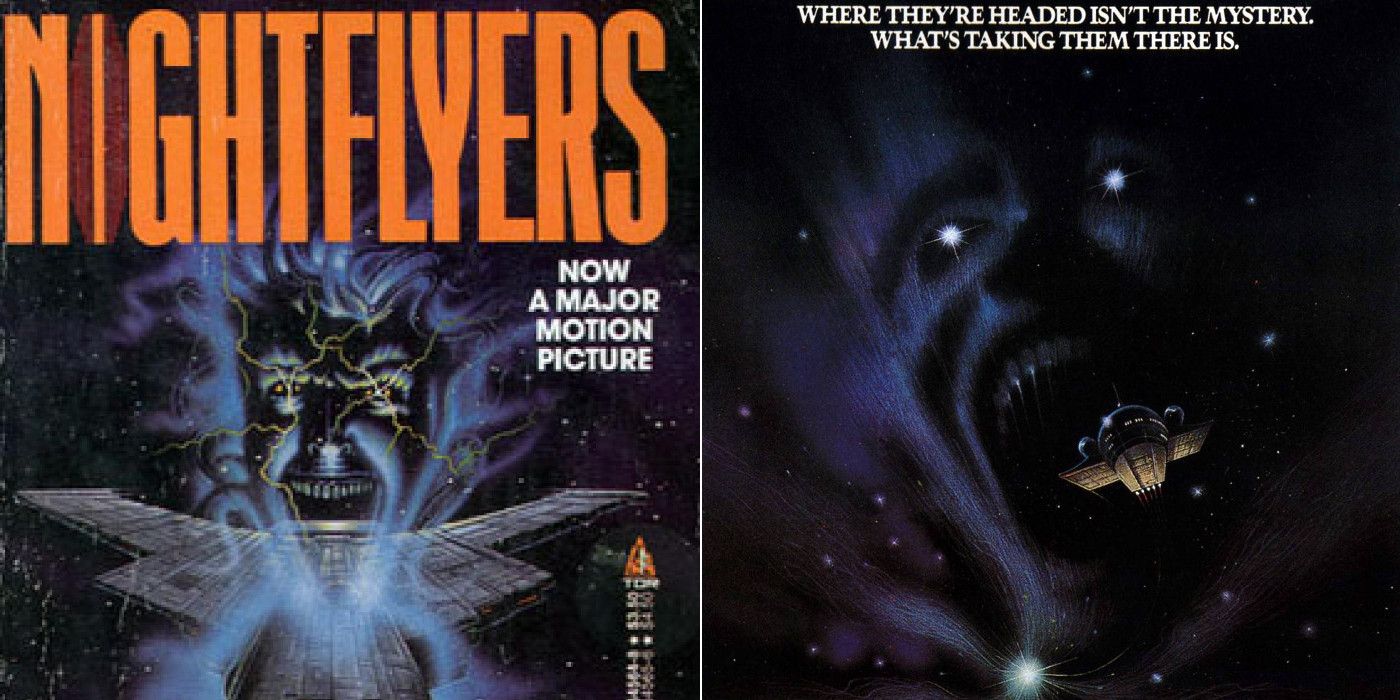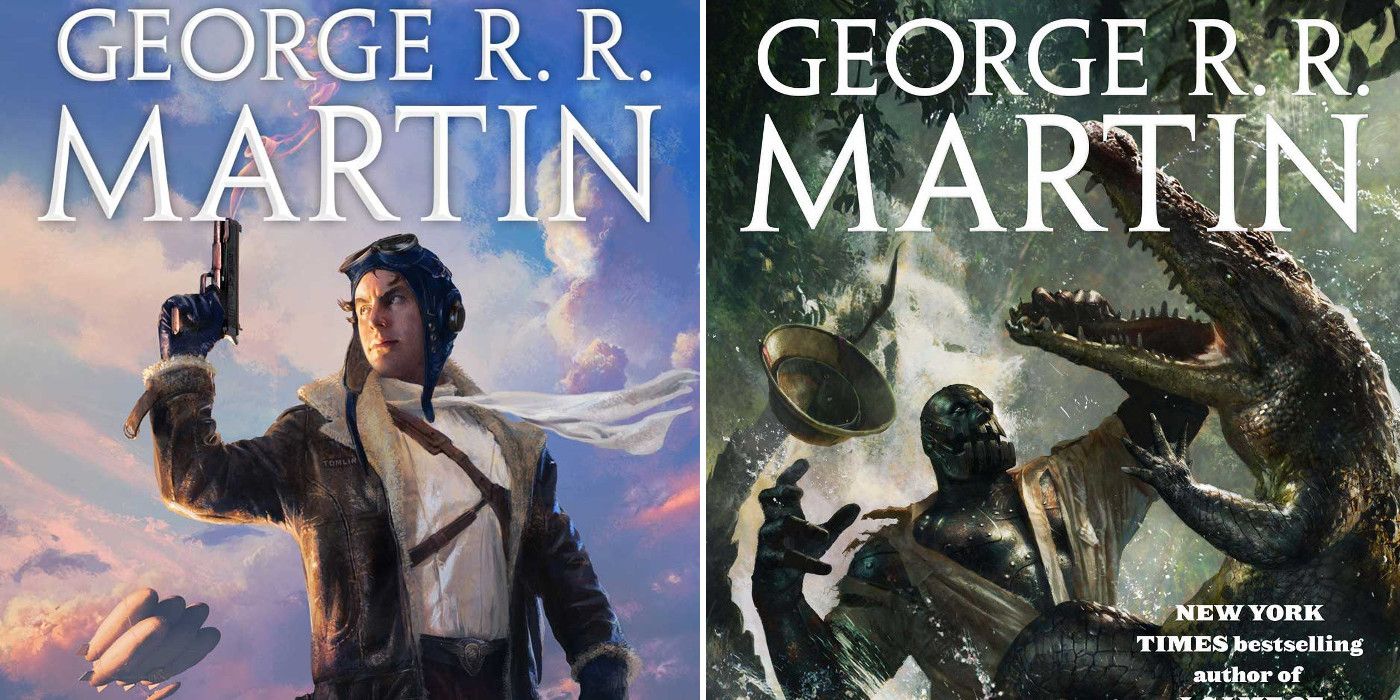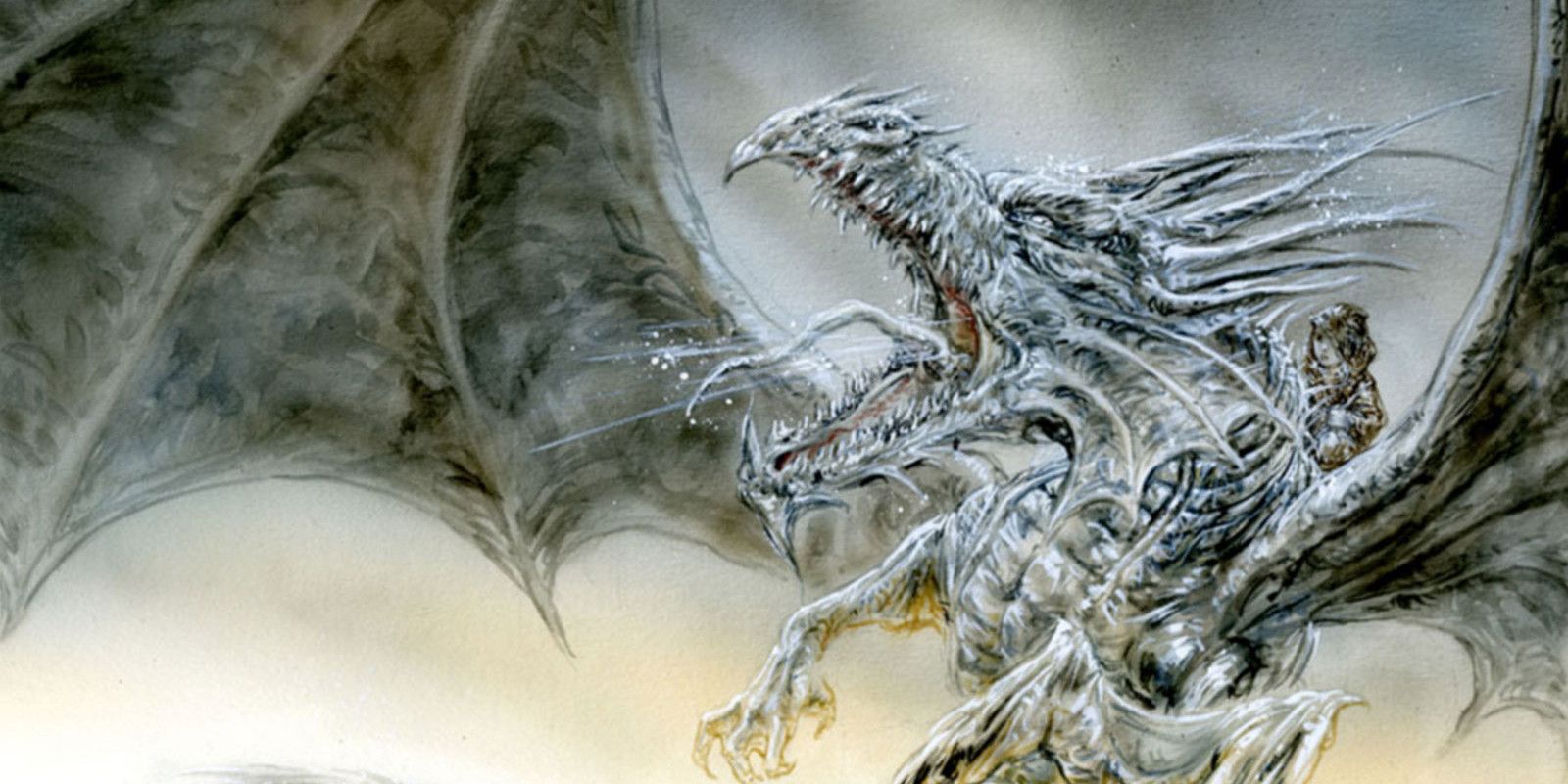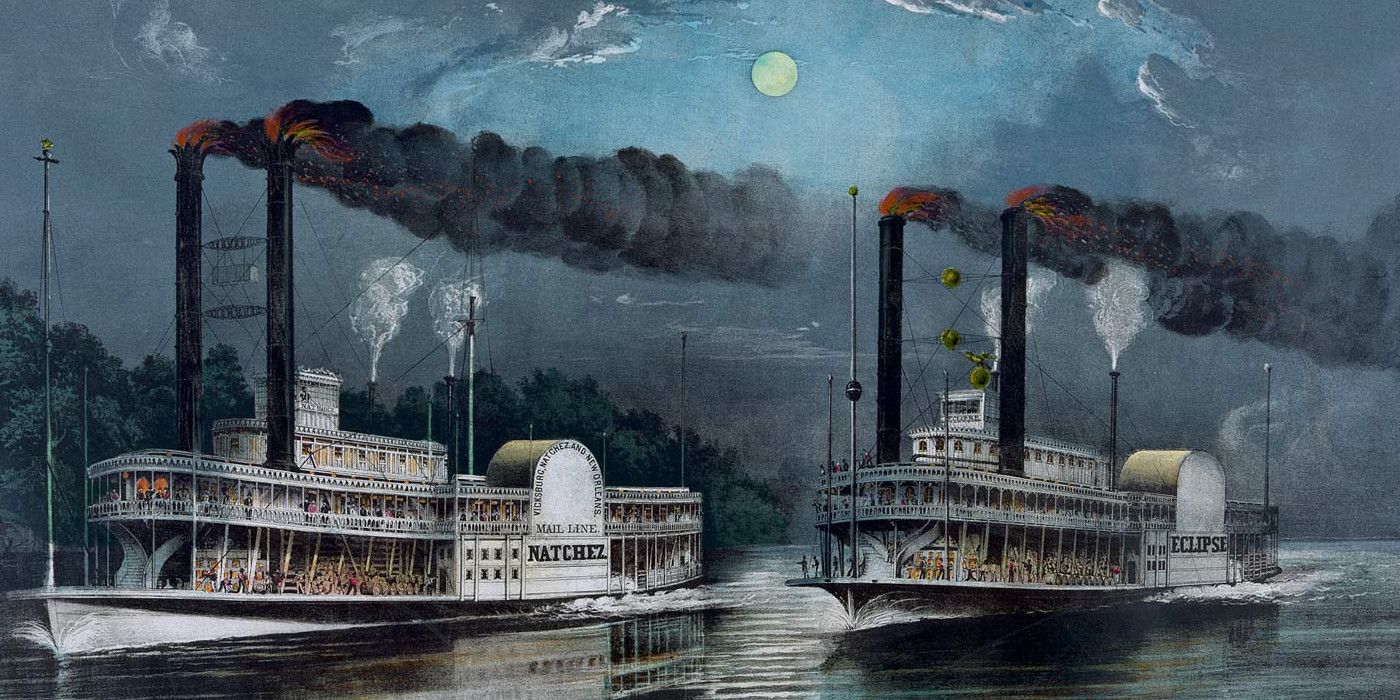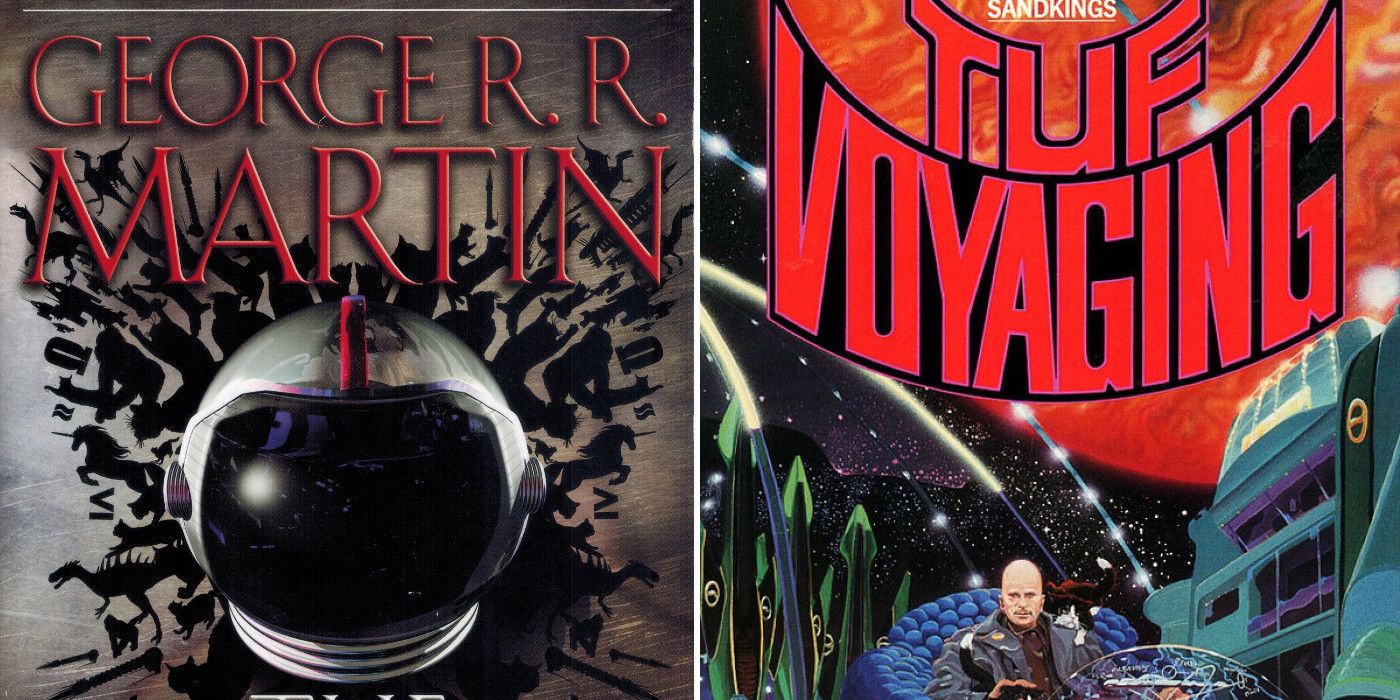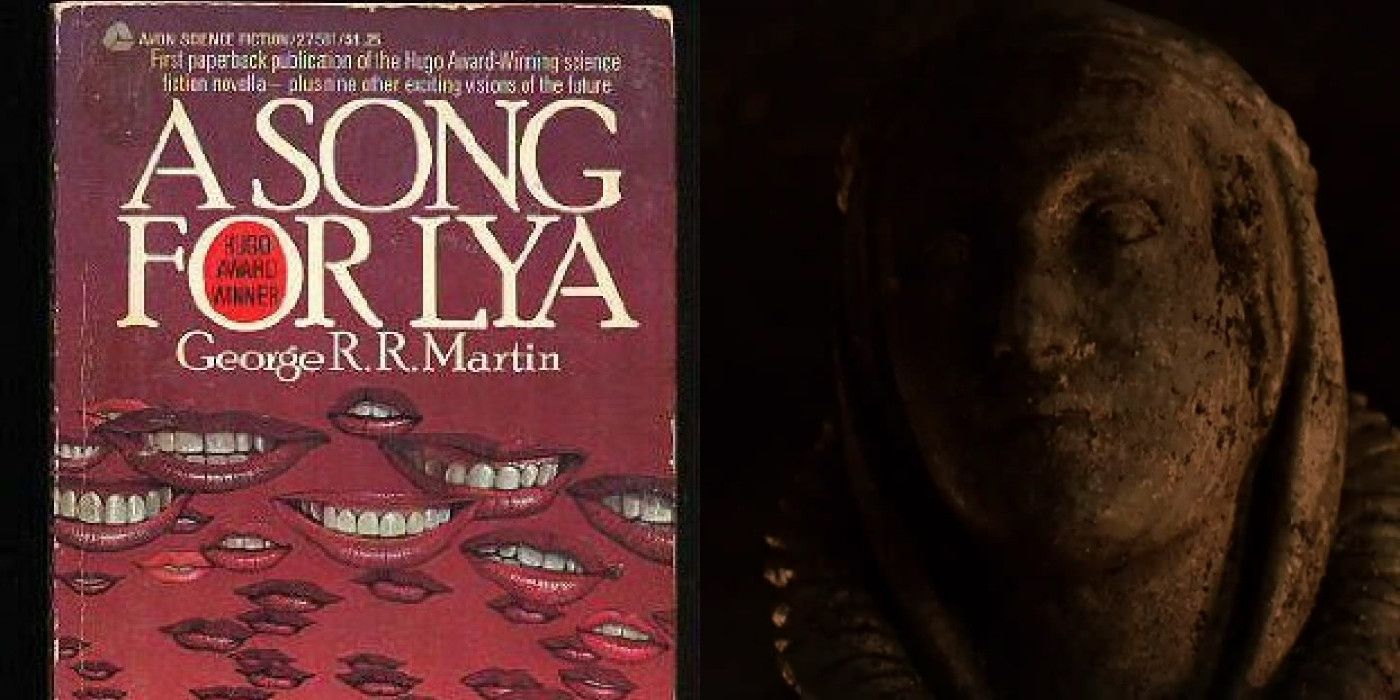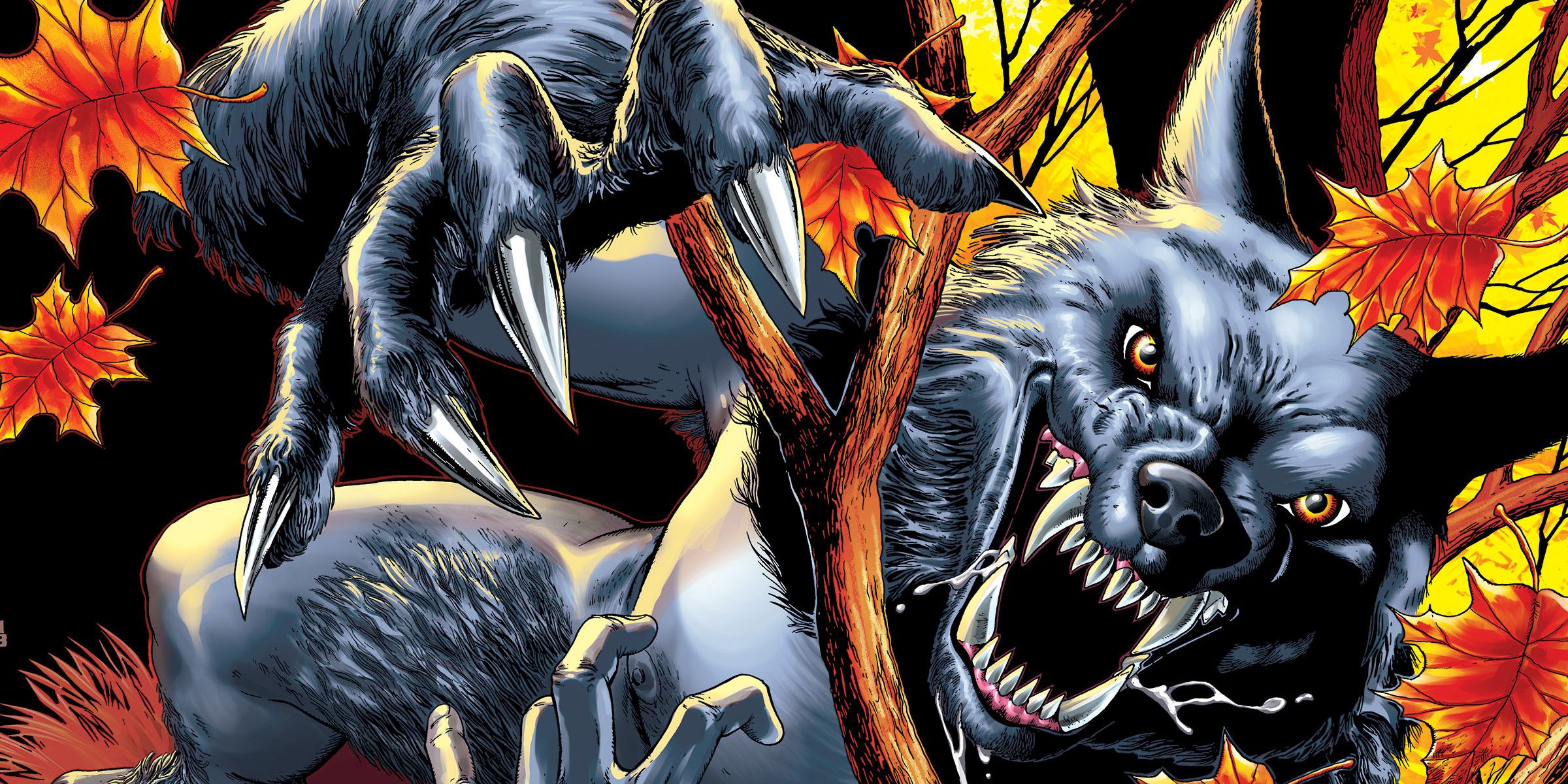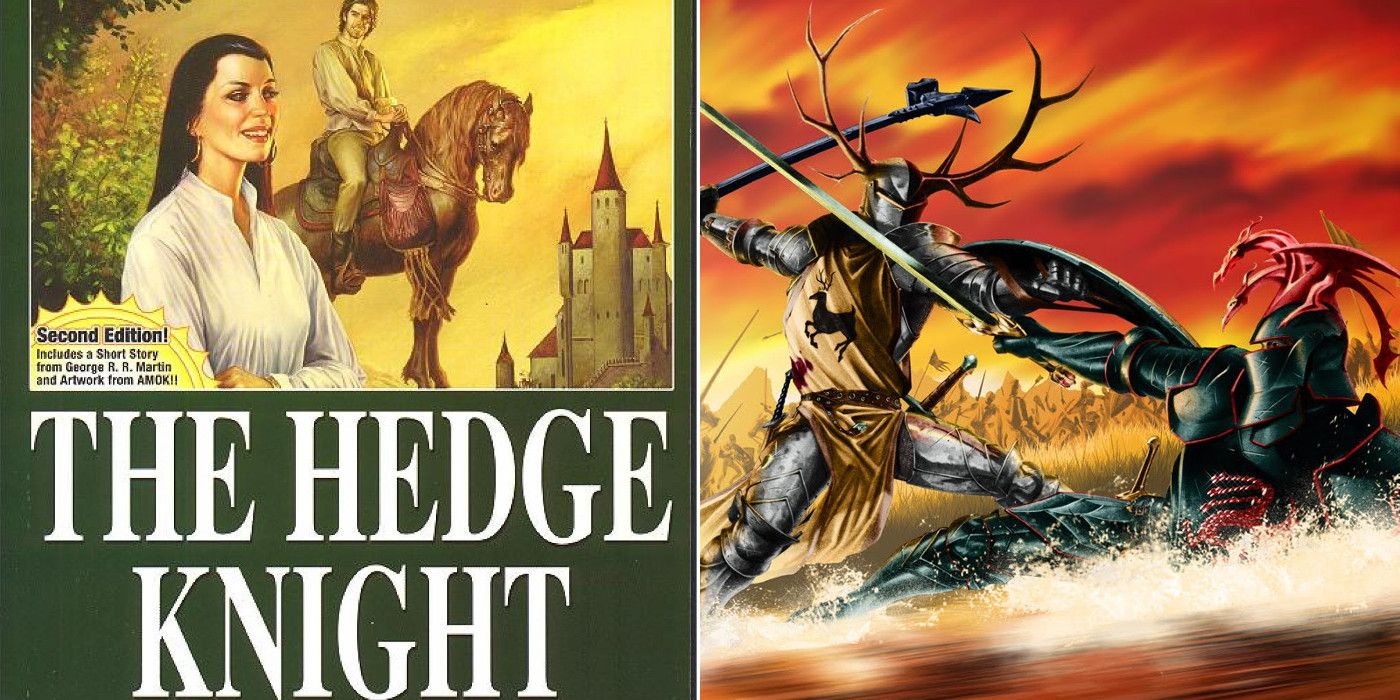Game of Thrones withdrawal is all too real. If you've already restarted the series from Episode 1, we don't blame you. The good news is George R. R. Martin has been a prolific writer since the 1970's. For enthusiasts of A Song of Ice and Fire, reading Martin's earlier works provides a great deal of context for how the world of Westeros was born.
In his short story The Skin Trade, you can find the roots of The Faceless Men. In A Song for Lya, you'll meet two characters named Lyanna and Robb. In Bitterblooms, you'll explore a wintry wasteland with frigid creatures reminiscent of the White Walkers. Beyond searching for scraps that pertain to the Seven Kingdoms, Martin creates characters and universes of unrivaled specificity in each of his stories. Whichever one you start to read first, set aside plenty of time to do it. Odds are, you won't be able to put it down.
Here are 15 George R. R. Martin Stories to Read Before Game of Thrones Returns:
15. The Pear Shaped Man
Don’t read this one at night. The Pear Shaped Man starts as a fairly innocuous tale about a slightly rotund, asocial man living in a basement apartment. We all know someone like him (as the book makes clear), and we’ve never thought twice about it. With George R. R. Martin at the helm, however, things aren’t as they seem. When Jessie, a twenty-something girl, moves into the apartment building, she becomes infatuated with the dweller below. The man beckons her to visit, to “show her things,” and though Jessie is repulsed by his advances, her curiosity overwhelms her to the breaking point.
Without ruining the story (which can easily be found online), know that many conspiracy theorists in the world of A Song of Ice and Fire believe The Three-Eyed Raven is very much like The Pear Shaped Man. Both creatures live unnaturally sedentary lives and have an innate ability to penetrate the minds of others. Only one of them, however, lives off a diet of warm Coke and cheese doodles.
14. Sandkings
Treat your pets with respect. For anyone who has abused their animals and even their insects, Sandkings offers the ultimate condemnation. On the distant planet of Baldur, the rich and adventurous Simon Kress collects rare and dangerous pets. More interested in sport than companionship, he sees his pets as gladiators in a ring, creatures to be tested. When he buys the Sandkings, small insect-like animals with psychic minds, he finally meets his match. Sandkings build castles and skirmish with one another. What’s more, as he discovers, they will worship whomever feeds them.
As Kress grows impatient with the slow growth of the Sandkings, he decides to starve them, forcing them to cannibalize each other. When Kress and his sadistic friends begin feeding puppies and other animals into the Sandking aquarium, the creatures’ appetites become dangerous and threaten the safety of the whole neighborhood. Though a creepy story with an unforgettable conclusion, Sandkings undoubtedly carries iconoclastic undertones germane to much of Martin’s writing.
13. Bitterblooms
J.R.R. Tolkien published The Hobbit in 1937, seventeen years before The Lord of the Rings hit bookstands. In 1978, George R. R. Martin’s short-story, Bitterblooms (based off Leonard Cohen’s song, “Suzanne”), landed quietly in the public eye, just sixteen-years before A Game of Thrones began one of the biggest book crazes of all time. Both “prequels” share a lot in common with their much larger descendants, though Tolkien’s follow-up trilogy is undoubtedly more direct.
First published in the Sandkings collection of short stories, Bitterblooms is set in a world saddled with an endless winter, not unlike that of A Song of Ice and Fire. The story follows Shawn, a lonely young woman who finds a long-abandoned starship that becomes her refuge from the wintry tundra, vampires, and more. When she meets a magical companion, she hopes she can be transported to safer lands. The adventures and realizations that follow are heartbreaking, particularly upon realizing that the places Shawn hopes to visit have been mentioned in other Martin short stories. Indeed, this distant planet may share more in common with Westeros thank you think.
12. Meathouse Man
Martin himself calls it the “darkest, bleakest, sickest, most twisted thing I ever wrote.” Indeed, Meathouse Man does not spare the whip with its impossibly grotesque depictions of necrophilia. These horrifying moments can’t even be singled out, as they pervade the entire story about a whorehouse whose employees are all deceased. With their brains ripped out, the whores of the Meathouse lay dead as door nails in their service rooms, but when patrons begin to use them, they show signs of sentience and respond to sex. “They were alive enough,” Martin describes them. Greg, the “hero” of the story, basically becomes Richard Gere in Pretty Woman, falling madly in love with his first corpse-whore. Though the short story has been in circulation for many years, Martin allowed Meathouse Man to be adapted into a graphic novel published in 2013. The story alone provokes nauseating imagery, so you can only imagine the severity of artist Raya Golden’s drawings.
11. Nightflyers
For all of his proficiency with high fantasy, Martin first found success as a science fiction writer. Nightflyers follows one man, Karoly d’Branin, who seeks to find the mysterious alien race the Volcryn. Karoly assembles a ragtag crew and a substandard spaceship, the eponymous Nightflyer. Though he has his team and his vehicle, Karoly has never met the Nightflyer’s captain, Royd Eris, who hides behind cloistered bulkheads in the ship. Not long into the voyage of the Nightflyer, mysteries start to play out: crew members die and their one telepath identifies a malicious force aboard the ship, bent on killing them all. The novella is a fairly quick read, yet Martin affirms his talent for building tension early and often. The final twist has a good payoff, but if you don’ t have time for the book, you can watch the trailer for the 1987 B-movie adaptation of Nightflyers right here.
10. The Armageddon Rag
If you think George R. R. Martin couldn’t write music, think again. Considered by many to be Martin’s masterpiece, The Armageddon Rag is a fully-fledged novel that follows a fictional band in the 1960s called The Nazgul (after Tolkien’s black riders). Though this story may be Martin’s most realistic venture, it still dabbles in fantasy, particularly in the increasingly apocalyptic third act.
As the story goes, Sandy Blair was a hard-living journalist of the rock ‘n’ roll era. After the Nazgul’s frontman was shot and killed at a concert in 1971, and their promoter was brutally murdered a decade later, Blair hits the road to investigate the murders and uncover the truth. When you read The Armageddon Rag, you’ll be swimming in a sea of incredible detail. Martin hasn’t just written songs and beautiful lyrics for The Nazgul, he even mentions the exact run-time of each tune. If it sounds like a period-piece murder-mystery, but know that The Armageddon Rag slowly turns into a slightly horrific tale in its own right. No matter the setting, Martin can’t shirk his devious roots.
9. Wild Cards
If you've beem searching for a new superhero series to sink your teeth into, look no further than Wild Cards. With stories from Roger Zelazny, Walter Jon Williams, Howard Waldrop, Lewis Shiner and more, George R. R. Martin has served as the series’ editor-in-chief for years, while contributing many of his own stories. All in all, Wild Cards spins an alluring yarn that’s perhaps more challenging than the majority of comic book properties.
In this 1940’s set alternate-history, a “wildcard virus” descends on New York City, killing much of the population and turning the survivors into superheroes. “Aces” gain superhuman abilities, while maintaining a human appearance, “Jokers” are powered up but also left disturbed or deformed, "Deuces" have weak, esoteric powers with no obvious uses. Though the central conceit is strong, Martin and his cohorts go one step further, creating an immensely detailed alternate history where the Middle East has a revived Caliphate and Frank Zappa is a modern military Patton. With over twenty volumes in publication, Wild Cards is well worth playing a few hands.
8. The Ice Dragon
As Martin’s children’s book debut, The Ice Dragon may be the fantasist’s most pleasant story of all. First published in 1980, it tells the tale of a little girl named Adara, born in the long night of winter. Though her mother died in childbirth, leaving Adara relatively alone, she has maintained a lifelong friendship with the ice dragon. She first touched it at age four and rode it the following year. The townspeople fear the ice dragon, however, for whenever it flies, it leaves a desolate and bleak winter in its wake. After enemy fire dragons attack the village, the Ice Dragon defeats the invaders and saves Adara’s family. Though the little girl never sees the dragon again, a quaint pool, quite cold to the touch, forms near the town.
While many fans (and even publishers) speculated that The Ice Dragon takes place in the same universe as A Song of Ice and Fire, Martin denied these claims on his website. Still, it’s hard to read the story and not imagine a similar creature flying over The Wall to combat Daenerys Targaryens’ famed firebreathers.
7. Fevre Dream
In George R. R. Martin’s preeminent exploration of the horror genre, Fevre Dream, he combines the undying charm of Mark Twain with the eternal creepiness of Bram Stoker. Set in the antebellum south, Martin’s signature vampire novel centers on the downcast steamboat operator, Abner Marsh. During a late-night meeting, Marsh is given a strange request by a gaunt and pale man named Joshua York. This ghostly-looking fellow commissions Abner to build a steamboat so he and his companions can travel up the Mississippi. Though unsure of York’s intentions and bound by the man’s peculiar demands, Marsh takes the money and builds the ship. As soon as the journey begins, however, the hero realizes he may have made a huge mistake. Demonstrating an encyclopedic knowledge of vampire tropes, Martin breaks new ground with Fevre Dream. It is a haunting tale that extends the genre and proves Martin’s proficiency well beyond the world of Westeros.
6. Tuf Voyaging
While far from full-fledged comedy, Martin’s sci-fi exploration of Haviland Tuf is perhaps the most lighthearted entry in his oeuvre. Though officially published in 1986, Tuf Voyaging is a “fix-up” of seven short stories published several years prior in Analog Magazine. At its core, Tuf Voyaging is a space adventure that feels more like Calvin and Hobbes in zero gravity than 2001: A Space Odyssey. The protagonist, Tuf, is one-of-a-kind.
Bald, big, armed with a dry wit and a cavalcade of cats, he is an exceedingly genuine character who seldom acts out of selfishness (interestingly enough, Martin suggested that Conleth Hill, who plays Varys in Game of Thrones, would be ideal casting for the role). When Tuf is hired by a crew of treasure hunters, he and his passengers find the Ark, a spaceship capable of both transforming and destroying entire planets. Told across seven stories, Tuf Voyaging fits humor and thrills into a narrative that ultimately carries larger implications than its humorous introduction might suggest. In the same universe, you'll find Martin's first novel ever, the underrated Dying of the Light.
5. A Song for Lya
Inspired by one of his own early romantic relationships, this story won George R. R. Martin the Hugo Award for Best Novella in 1975. Its two main telepath protagonists, Robb and Lyanna, investigate the inhabitants of a distant planet who allow a sort of symbiotic organism to merge with their being and ultimately take over. These organisms are called “Greeshka,” and when ingested, they fill the host with ebullient love to an extraordinary degree. After ten years, however, this almost hallucinatory high ends with the host committing suicide and being consumed by a much larger “Greeshka,” which takes the being to the afterlife.
Though Rob and Lyanna are both telepaths, the lovers arrive on the planet and feel a chasm growing between them. While Lya can read thoughts, Rob can only read emotions, and the couple begins to grow apart. As they become tempted by the Greeshka and the promise of even greater love and ecstasy, their relationship is put to the test.
4. The Way of Cross and Dragon
A thinly-veiled allegory for Martin’s dissenting views on organized religion, The Way of Cross and Dragon combines Roman Catholicism with science-fiction to intriguing ends. Damien Har Varis, from whose perspective the story is told, is a Knight Inquisitor in the One True Interstellar Catholic Church. His aims to quell the uprising of a strange cult that has turned Judas Iscariot into their god. Their sacred text, The Way of Cross and Dragon, explores the previously untold story of Judas’ upbringing, from being born to a prostitute, to taming dragons and learning the dark arts. Furthermore, their bible details the torturing and maiming of Jesus Christ for which Judas was guilty. Though Damien enjoys reading The Way of Cross and Dragon, he know its non-canonical roots render it mere fantasy in the eyes of God. When he meets the book’s author, however, his beliefs come into question as he discovers the Judas Iscariot sect is founded on lies.
3. The Road Less Traveled (The Twilight Zone)
After struggling to find his financial and critical footing with novels, Martin tried his hand writing for film and television. He found a modicum of success writing for The Twilight Zone for which he produced eight episodes. Though they are all compelling, his work on The Road Less Traveled packed the biggest punch. With director Wes Craven at the helm, Martin’s teleplay follows Jeff and his family in their seemingly comfortable suburban home. After putting his daughter to bed one night, however, the girl runs back downstairs and claims that she saw a man in her bedroom. Jeff dutifully brings her back upstairs, checks for monsters, then determines all is well. When he switches off the bedroom light, however, he is thrust into a war-torn jungle with helicopters, machine-gun fire, and more.
As the events unfold, we learn that Jeff has been suffering PTSD not from fighting in a war, but from dodging the Vietnam Draft (Martin himself was a conscientious objector). The man haunting his family is actually himself in an alternate reality desperate to see what life was like without going to war. The two lives overlap in a story only Martin could execute.
2. The Skin Trade
Taking full advantage of his contract deal with HBO, Martin recently signed a contract with Cinemax to adapt his much ballyhooed and award winning short-story The Skin Trade. Given its werewolf-centric subject matter, it will certainly make for some pulpy television. The Skin Trade follows a collections agent with a werewolf alter-ego along with his private investigator friend, Randi Wade. Together, they uncover malicious secrets surrounding grisly murder scenes with bodies stripped of their skin (perhaps a precursor to Jaqen H’ghar’s macabre profession).
To werewolf-lit initiates, The Skin Trade is often looked upon as the American Werewolf in London of short stories. Indeed, this werewolf isn’t your run of the mill carnivore. He’s “asthmatic, hypochondriac and not very formidable,” as Martin described him before naming William H. Macy, Steve Buscemi and Paul Giamatti as contenders for the lead role. However the Cinemax show plays out, be sure to read the short story first.
1. The Tales of Dunk and Egg
As you wait for season 7 of Game of Thrones and the eventual publication of The Winds of Winter, The Tales of Dunk and Egg will more than bide your time. Set nearly a century before the events in ASoIaF, there are currently three novellas of Dunk and Egg with at least six more to come, according to Martin. Each installment recounts the adventures of Ser Duncan the Tall, one of the most famous members of the Kingsguard, and his loyal squire, Egg. Despite his unassuming name, Egg would later become Aegon V Targaryen of Westeros. Though tangentially related to the characters we love in Westeros, The Tales of Dunk and Egg do wonders to color in the often overwhelming history and timeline of A Song of Ice and Fire.
Though it likely won't happen for several years, expect these novellas to be adapted by HBO in the not too distant future. As with The Hobbit and The Lord of the Rings, you can bet the audience appetite for more Westerosi drama will be at fever pitch not long after season 8 concludes.
-
What's your favorite George R. R. Martin story? Tell us in the comments below!

